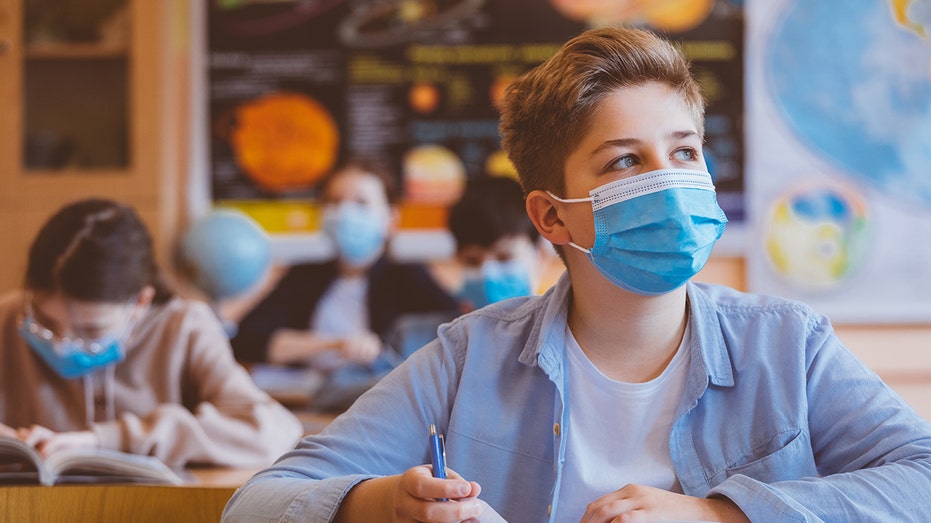Pandemic learning loss could cost students $70,000 in lifetime earnings
Study by Stanford University economist projects the losses could total $28 trillion over the rest of this century
Math, reading scores plummet post school closures
'Kennedy' panelists Brian Brenberg, Charles McBee and Alli Breen discuss the impact school closures during COVID-19 had on students' education as math and reading scores reached a new low in decades.
Learning loss could shave $70,000 off the lifetime earnings of children who were in school during the pandemic, according to a new study by a Stanford economist.
The sobering forecast is based on an analysis of the sharp declines in the scores of eighth-graders on national math tests taken between 2019 and 2022.
If the learning losses aren’t recovered, K-12 students on average will grow into less educated, lower-skilled and less productive adults and will earn 5.6% less over the course of their lives than students educated just before the pandemic, said Eric A. Hanushek, a Stanford University economist who specializes in education. He said the losses could total $28 trillion over the rest of this century.

Students demonstrate during a rally to call on, then New York Mayor, Bill de Blasio to keep schools open, Saturday, Nov. 14, 2020, in New York. Students, parents and teachers continued anxiously watching New York City's coronavirus test results as th (AP Photo/Mary Altaffer / AP Newsroom)
"The economic costs of the learning losses will swamp business cycle losses," said Dr. Hanushek.
MOST 'RECESSION-PROOF' JOBS IN 2022
Scores on the 2022 National Assessment of Educational Progress, known as the Nation’s Report Card, fell across the board. Dr. Hanushek’s analysis is based on eighth grade math test scores that fell an average of eight points from 2019, before the pandemic. That is the largest drop ever recorded on the 32-year-old exam and translates to between 0.6 and 0.8 years of missed school, according to Dr. Hanushek.
Students in Oklahoma, Delaware and West Virginia fared among the worst, with declines of about 12 points. Students in Idaho, Alabama and Alaska showed some of the smallest declines—four points—and Utah didn’t register a statistically significant decline.
Those declines could translate into lifetime income loss of between 3% and 9% depending on the state, Dr. Hanushek said.

Young children attend online class from home. Schools were closed during the coronavirus outbreak and the classes have moved to e-learning platform. (iStock) (iStock / iStock)
Dr. Hanushek’s analysis echoes a study released in October by researchers from Harvard and Dartmouth Universities, which estimated that if the learning loss isn’t reversed, it would equate to a 1.6% drop in lifetime earnings for the average K-12 student.
That study also found learning loss leads to lower high school graduation rates and college enrollment as well as higher teen motherhood, arrests and incarceration.
Nationwide, the percentage of eighth-grade students who failed to attain basic levels of math skills on the exam grew to 38% from 31% before the pandemic. That means those students typically struggle to solve simple algebra and geometry equations, such as solving for the angles in a triangle, said Daniel McGrath, acting associate commissioner for assessments at the National Center for Education Statistics, which administers the test.
"I think these eighth-graders are really, potentially, in a difficult spot," Dr. McGrath said.
During periods of remote learning in the pandemic, the quality of math instruction suffered, often relying on memorization and mimicry, rather than a deeper understanding of concepts, said Kevin J. Dykema, an eighth-grade math teacher in Mattawan, Mich., and president of the National Council of Teachers of Mathematics. "It’s because they were used to just sitting in front of a computer screen," he said.

High school students at school, wearing N95 Face masks. Teenage boy sitting at the school desk, looking away and thinking.
Students are taking longer to learn concepts this year, require more tutoring, and struggle to engage in group activities, he said.
Of about 2 billion school-age children in the world, 1.6 billion missed a significant amount of classroom time during the pandemic, according to a Unicef report published in December 2021. Previous disruptions offer some insight about what that loss could portend and indicate the learning losses suffered during the pandemic may be permanent.
The findings follow similar income drops economists have studied connected to learning losses after natural disasters and political interruptions around the world. In Argentina, where regional teacher strikes were commonplace between 1988 and 2014, primary students in some regions of the country missed an average of 88 days of school over the course of their primary-school education, according to a 2019 paper published by the Journal of Labor Economics and co-authored by Alexander Willén, a professor of economics at the Norwegian School of Economics in Bergen, Norway.
CLICK HERE TO GET THE FOX BUSINESS APP
Those students attained less education, accrued fewer skills and, as adults, had higher rates of unemployment than students who were in districts without school disruptions due to teacher strikes. The impact was greater on younger students and those from poorer families.
When they reached the ages of 30 to 40, the men earned 3.2% less and the women 1.9% less than those who weren’t affected by strikes during their school years, the study found.




















